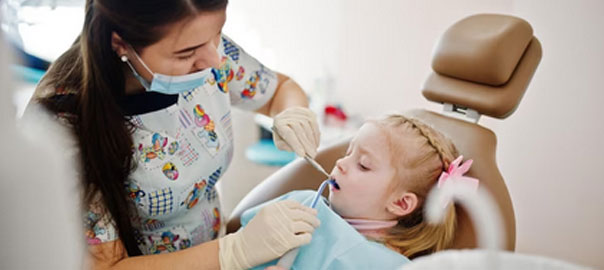
The Firsts of Baby’s Oral Health: From First Teeth Eruption to First Dental Visit
As a parent, there are many firsts that you will experience with your baby, and one of the most important ones is their oral health. From the moment your baby’s first tooth emerges, it’s important to start thinking about their dental care. In this blog post, we’ll discuss the firsts of your baby’s oral health, including when your baby should start using a toothbrush.
First Teeth Eruption
Your baby’s first teeth will typically start to emerge between the ages of six months to one year. This can be exciting as well as challenging at the same time, as your baby may experience discomfort and pain while their teeth are erupting. It’s important to keep your baby’s gums clean during this time by wiping them gently with a clean, damp cloth after feeding.
Eruption Cycle in Babies
The eruption cycle of baby teeth(deciduous teeth) typically begins around 6 months of age and can last until the child is 3 years old. Here is a general timeline of when you can expect to see your child’s teeth emerge:
- 6-10 months: The bottom front teeth (central incisors) usually appear first, followed by the top front teeth.
- 8-12 months: The top lateral incisors (teeth next to the top front teeth) usually come in next, followed by the bottom lateral incisors.
- 9-16 months: The first molars typically emerge, at the back of the mouth.
- 13-23 months: The canines (pointy teeth next to the lateral incisors) usually come in next.
- 23-31 months: The second molars usually emerge, at the back of the mouth.
Keep in mind that these timelines are just rough estimates and every child is different. Some babies may start teething earlier or later than this, and the order in which their teeth emerge can vary as well. Also the timeline for the eruption of the teeth of boys is slower than that of girls, so parents dont need to get worried if their kids’ teeth are erupting a few weeks later.
First Toothbrush
As your baby’s teeth start to emerge, it’s important to start thinking about introducing a toothbrush. The American Dental Association recommends that parents start brushing their baby’s teeth with a soft bristled toothbrush as soon as the first tooth emerges. This can help prevent cavities and promote good oral health habits from an early age.
Choosing a Toothbrush
When choosing a toothbrush for your baby, it’s important to select one that is specifically designed for their age. Look for a toothbrush with soft bristles and a small head that can easily fit into your baby’s mouth. You can also consider using a finger brush, which fits over your finger and can be used to clean your baby’s teeth and gums.
Brushing Technique
When brushing your baby’s teeth, use a small amount of fluoride toothpaste (about the size of a grain of rice) and gently brush their teeth and gums in circular motions. Be sure to brush all surfaces of the teeth, including the front, back, and top surfaces.
It’s important to make toothbrushing a positive experience for your baby. Try singing a song or making it into a game to help distract them from any discomfort they may be feeling. It’s also a good idea to brush your own teeth in front of your baby so they can see that it’s a normal part of a daily routine.
First Dental Visit
The American Academy of Pediatric Dentistry recommends that children have their first dental visit by their first birthday, or within six months of the eruption of their first tooth. This may seem early, but it’s important for your dentist to monitor your baby’s oral health from an early age and identify any potential issues.
During your baby’s first dental visit, the dentist will examine your baby’s mouth and teeth and look for any signs of decay or other issues. They will also provide you with information on how to care for your baby’s teeth and gums at home.
Tips for preparing your baby for their first dental checkup:
To help your baby feel more comfortable during their first dental checkup, you can:
- Schedule the appointment at a time when your baby is well-rested and fed.
- Bring along a favorite toy or blanket to help your baby feel more comfortable.
- Be calm and reassuring: If you’re nervous, your baby will sense it and may become more anxious.
- Be prepared to hold your baby during the appointment: Your dentist may ask you to hold your baby during the examination.
Tips for Maintaining Good Oral Health
In addition to brushing your baby’s teeth, there are other steps you can take to promote good oral health:
- Avoid putting your baby to bed with a bottle, as this can lead to tooth decay
- Limit sugary snacks and drinks, which can also contribute to tooth decay
- Encourage your baby to drink water, which can help wash away food particles and bacteria
- Consider using fluoride varnish or dental sealants to help protect your baby’s teeth from decay
- Clean your baby gums with a clean, warm and damp cloth. This will prevent any sort of infection before the eruption.
Your baby’s first dental checkup is an important step in ensuring good oral health from an early age. By starting early, you can prevent dental problems, develop good dental habits, and identify any potential problems early on. If you have any questions or concerns about your baby’s oral health, be sure to talk to your dentist. They can help you establish a dental care plan that is right for your baby.
Leave a Reply
Leave a Reply
Explore More Similar Posts
Explore More Blogs


Leave a Reply